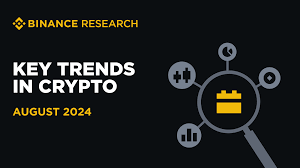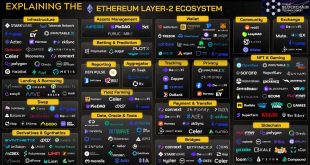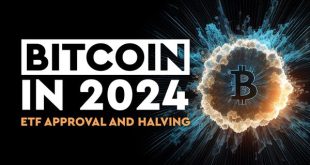Decentralized Finance (DeFi) has emerged as one of the most transformative sectors within the blockchain and cryptocurrency landscape. By leveraging smart contracts and blockchain technology, DeFi aims to recreate and improve upon traditional financial systems without intermediaries. This overview explores the current trends and innovations shaping the DeFi ecosystem.
Key Trends in DeFi

1. Increased Interoperability
- Cross-Chain Solutions: Projects are increasingly focusing on interoperability between different blockchain networks, allowing assets and data to move seamlessly. Protocols like Polkadot and Cosmos are at the forefront of this trend.
- Bridges: Cross-chain bridges enable users to transfer tokens between different blockchains, enhancing liquidity and expanding DeFi ecosystems.
2. Layer 2 Solutions
- Scalability Improvements: Layer 2 solutions, such as Optimistic Rollups and zk-Rollups, are being adopted to improve transaction speed and reduce costs on Ethereum and other blockchains.
- Enhanced User Experience: By alleviating network congestion, these solutions make DeFi applications more accessible to a broader audience.
3. Institutional Adoption
- Growing Interest from Institutions: More institutional investors are entering the DeFi space, looking for yield opportunities and exposure to crypto assets. This trend is supported by platforms offering compliant and secure ways for institutions to engage with DeFi.
- Partnerships with Traditional Finance: Collaborations between DeFi projects and traditional financial institutions are becoming more common, leading to innovative financial products that blend both worlds.
4. Yield Farming and Liquidity Mining
- Attractive Returns: Yield farming and liquidity mining continue to attract users looking to earn passive income on their crypto holdings. Platforms like Yearn.finance and Compound offer competitive yields for liquidity providers.
- Innovative Incentives: Projects are experimenting with different incentive structures to attract users and liquidity, including governance tokens and staking rewards.
5. Governance and Community Involvement
- Decentralized Governance: Many DeFi protocols are adopting decentralized governance models, allowing token holders to participate in decision-making processes. This promotes community engagement and aligns interests.
- DAO Formation: Decentralized Autonomous Organizations (DAOs) are emerging as a governance model for DeFi projects, enabling collective decision-making and resource management.
Innovations in DeFi
1. Synthetic Assets
- Creating Derivatives: Platforms like Synthetix allow users to create and trade synthetic assets that mimic the value of real-world assets, including stocks and commodities. This expands investment opportunities within DeFi.
- Diversification of Portfolios: Synthetic assets enable users to diversify their portfolios without needing to hold the underlying assets physically.
2. Stablecoins
- Importance of Stability: Stablecoins play a crucial role in DeFi by providing a stable medium of exchange. Innovations in algorithmic stablecoins and collateralized stablecoins are gaining traction, with projects like Terra and MakerDAO leading the way.
- Integration with DeFi Protocols: Stablecoins are increasingly integrated into DeFi protocols for lending, borrowing, and trading, enhancing liquidity and user experience.
3. Decentralized Exchanges (DEXs)
- Automated Market Makers (AMMs): DEXs like Uniswap and SushiSwap have popularized AMM models, allowing users to trade tokens directly from their wallets without intermediaries.
- Liquidity Pools: Users can provide liquidity to pools and earn fees, incentivizing participation and enhancing market efficiency.
4. Insurance Protocols
- Risk Mitigation: As DeFi grows, so does the need for risk management solutions. Decentralized insurance protocols like Nexus Mutual and Cover offer coverage against smart contract failures and other risks.
- Innovative Coverage Models: These platforms are exploring new models for risk assessment and pricing, making insurance more accessible and efficient.
5. Flash Loans
- Instant Liquidity: Flash loans allow users to borrow assets without collateral, provided the loan is repaid within the same transaction. This innovation enables arbitrage opportunities and other complex strategies.
- Potential Risks: While flash loans offer unique advantages, they also pose risks, including potential exploits and market manipulation.
Challenges Facing DeFi
1. Regulatory Scrutiny
- Evolving Regulations: As DeFi grows, regulators are increasingly focusing on compliance, which could impact the development and operation of DeFi platforms.
- KYC and AML Concerns: Implementing Know Your Customer (KYC) and Anti-Money Laundering (AML) measures may challenge the decentralized ethos of some projects.
2. Security Risks
- Smart Contract Vulnerabilities: The risk of hacks and exploits remains a concern, with several high-profile incidents affecting DeFi protocols. Continuous audits and security measures are critical.
- User Education: Many users may lack the understanding needed to navigate DeFi safely, making education a priority for the industry.
3. Market Volatility
- Impact on Liquidity: The highly volatile nature of cryptocurrencies can affect liquidity and stability within DeFi protocols, particularly for those relying on collateralization.
Conclusion
Decentralized Finance (DeFi) continues to evolve rapidly, driven by innovation and a commitment to reshaping traditional financial systems. As trends like interoperability, institutional adoption, and the rise of synthetic assets gain momentum, the DeFi landscape will likely undergo significant transformations. While challenges such as regulatory scrutiny and security risks persist, the potential for DeFi to democratize access to financial services and empower individuals worldwide remains promising. Keeping an eye on these trends and innovations will be essential as the DeFi ecosystem develops further.



ey4exy